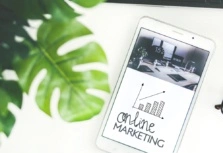If you want to make your e-commerce store more profitable, you really need to think about customer loyalty. To explain why, here’s a story.
Meet Jane. Jane is 8 months into building her first e-commerce store. She’s set up her store, added some killer products, run some great ads, and grown her sales (go Jane)!
But there’s a problem. To get her store to where it is, she’s had to keep product prices low to beat the competition. And she’s had to spend a lot building her brand and running ads. After all these expenses, there’s not much money left for Jane each month.
So, Jane decides it’s time to get her store more profitable. But how?
- She could increase the prices of her products - but then she risks losing out on sales to her competitors.
- She could try cutting her ad spend - but then traffic to her store will decrease.
If you were Jane, what would you do?
Hopefully, you would start thinking about customer loyalty. Because for e-commerce entrepreneurs in Jane’s position, customer loyalty is the perfect profitability fix.
And in this article we’ll tell you why:
- We’re going to start with a quick outline of what customer loyalty is.
- Then we’ll take an in-depth look at why it’s so important.
- We’ll also explain some key customer loyalty metrics.
- Finally, we’ll take a look at some killer strategies to improve customer loyalty.
Let’s do this (for your sake, and Jane’s)!
What is customer loyalty?
Customer loyalty refers to a customer’s willingness to come back to a company to conduct business. It is achieved when customers purchase your product or service repeatedly, enthusiastically, and without much consideration of your competition.
Customer loyalty is typically the result of pleasant and convenient experiences customers have with a particular brand. There are many factors that contribute to customer loyalty, for instance:
- a positive emotional connection,
- exceptional customer service,
- or continual improvement in a brand’s products and services.
Stemming from customer satisfaction, customer loyalty outweighs availability, pricing, and other factors that typically impact buying decisions. When a customer is loyal to a product, service, or brand, they are willing to wait for a restock or spend a little extra money for it.
What is the difference between customer loyalty and customer retention?
Although the terms “customer loyalty” and “customer retention” are often used interchangeably, they actually refer to two different things.
Customer loyalty refers to customers who have decided to continue to do business with a brand as a preference over that brand’s competitors. Loyalty is demonstrated and nurtured over time, so customer loyalty is about establishing longer and more sustainable relationships.
Customer retention, on the other hand, is simply a measure of whether or not a customer intends to continue to do business with a brand. That may be because the brand’s products are cheaper, they are located closer than other brands, or they are more convenient. Such a customer may have been retained by the brand, but the customer may not be loyal to the brand in the long term.
Loyal customers actually prefer a brand’s products and services, and they are not likely to abandon a brand because another brand is more convenient or even more economical. That is why customer loyalty is the ultimate goal of nearly every business.
Why is customer loyalty so important?
Loyal customers are one of the most valuable assets of any e-commerce business. There are many obvious advantages to high customer loyalty, but we outlined several major ones.
Loyal customers spend more at your store
Keeping customers loyal is one of the most effective ways to grow your business. That’s because loyal customers return to spend more money with you as they grow to trust your brand. Research found that your loyal top 10% spend three times more per order than your lower 90% of customers. So loyal customers are going to have a greater lifetime value than customers that are simply buying from your store out of convenience.
Loyal customers are easier to convert
Loyal customers yield higher conversion rates, which means that they are easier to sell to. Research shows that existing customers have an average conversion rate of around 60% to 70%. That’s massive compared to the 5% to 20% conversion rate of new customers. In other words, you get more value from loyal customers visiting your e-commerce store.
Simply put, if customers have enjoyed previous purchases and feel loyal toward your brand, it’s relatively easy to convince them to buy other products as well. Customer loyalty generates an ongoing cycle of sales that drives the profits of your e-commerce store.
It’s much cheaper to retain a loyal customer than to acquire a new one
When you run an e-commerce business, you have to choose carefully where to spend your money. Acquiring new customers can be expensive - you have to invest in marketing and advertisements to attract customers.
However, when your customers are loyal, you need to spend less money to get them to spend money with you. It’s much more efficient to re-engage an existing loyal customer than to recruit a new one. So customer loyalty can save you significant marketing costs. If you have no repeat customers, it will become expensive to acquire every single customer.
Loyal customers become advocates for your brand
Customer loyalty significantly increases the likelihood of your customers recommending your business to others. Loyal customers are, in a sense, brand advocates that are likely to tell their friends and relatives why they should be using your products or services over another brand. They are also likely to make social media posts espousing your product and its benefits.
That’s free marketing! This way, customer loyalty can help spread the message about your brand, get more eyes on your offerings, and boost conversions. And it won’t cost you a cent.
All in all, customer loyalty is essential to e-commerce success. It helps you save on marketing and customer acquisition costs, build referrals, and increase sales.
Ready to take stock of the loyalty levels of your customer base? Next, we turn to the metrics that can help you measure customer loyalty.
How to measure customer loyalty
Loyalty is an emotion, which makes it a little tricky to measure. However, there are metrics that can give you great insight into the loyalty levels among your customers. The two key ones are customer lifetime value (CLV) and repeat purchase rate (RPR).
Let’s look at them more closely.
Customer lifetime value (CLV)
Customer lifetime value represents the total amount of money a customer is expected to spend in your business, or on your products, during their lifetime.
Simply put, CLV measures what each acquired customer is worth to your store in the long run.
It is one of the most useful e-commerce metrics because it allows you to determine a few key things:
- how much you can afford to spend on customer acquisition;
- what you should spend to retain each customer;
- what are the most valuable customers or their segments that must be prioritized when encouraging customer loyalty.
The simplest way to calculate CLV is:
CLV = average value of a purchase X number of times the customer will buy each year X average length of the customer relationship (in years)
For instance, a marathon runner who regularly buys shoes from your shoe store might be worth:
$100 per pair of shoes X 4 pairs per year X 8 years = $100x4x8=$3,200
The higher the CLV value is, the more loyal your customer.
As CLV measures the profit associated with a particular customer relationship, this metric can guide how much you are willing to invest to maintain that relationship. That is, if you estimate one customer’s CLV to be $100, you shouldn’t spend more than that on trying to improve their loyalty.
Repeat purchase rate (RPR)
The repeat purchase rate measures the percentage of your customers who come back for another purchase over a given period of time.
It should be noted that RPR does not necessarily indicate your customers’ particular attachment to your store - they could merely be making the repurchase because of convenience or for similar reasons.
However, for products that are repeatedly purchased from a single store in a competition-rich environment such as e-commerce, the number of transactions becomes a good measure of loyalty.
Here’s the formula for calculating RPR:
RPR = the number of customers that purchased more than once / the total number of customers X 100
This can be calculated based on a variety of time frames such as daily, weekly, or monthly.
For example, if you had 200 customers complete a purchase in the past week and 50 of them have purchased before, your weekly RPR is 25%.
The higher the RPR percentage, the more loyal your customer base is.
But what percentage should you aim for? Well, stats show that the average RPR of e-commerce brands is 28,2%, so use that as a benchmark.
So now that you’ve measured the loyalty of your customers, let’s move on to ways you can improve their attachment to your brand. After all, loyal customers are vital to the growth and longevity of your business.
How to improve customer loyalty
As we’ve already established, customer loyalty is essential if you want to become more profitable. But the question is, how do you get your customers to become loyalty lifetime shoppers rather than one-timers?
Well, here are 7 effective strategies you can implement to achieve exactly that. Let’s take a look.
Strategy 1: Build great customer experiences
User experience can make or break customer loyalty. Good online user experience drives a smooth customer journey, and the easier you make the lives of your customers, the more they will keep coming back.
So make sure to improve the experience a customer has when buying from you. Consider these areas:
- Your web design. If your store looks professional and trustworthy, customers are more likely to buy what you’re offering.
- The purchase process. If a customer is able to easily find the items he needs, get information on them in seconds, and then check out quickly - chances are he’ll be back to your store soon.
- Post-purchase touch. Stay in contact with your customer by sending, for instance, delivery updates via their preferred channel. This simple detail can enrich customer experience and make your buyers feel more valued.
Strategy 2: Build your brand (and get as personal as possible)
Branding is very important when cultivating customer relationships. After all, customers will form a particular perception of your business and want to feel it every time they interact with it. And when it comes to customer loyalty, getting personal works wonders.
There are two parts to this strategy.
Get to know your customers…
While brand consistency is key to building loyalty, even more important is taking the time to know your customers. Treat each customer as a person, not as just another paying buyer. Here, a nice personal touch could be a handwritten note that comes with a purchase, or a personalized birthday message with a special deal.
… and let your customers know you!
For your customers to trust your brand, you’ll also have to share information about yourself and your business. For instance, you can talk about what’s important to you on a blog on your website, or share your values in regular posts and ads on social media. This will help customers see the humanity of your brand, making them more comfortable about doing business with you.
Strategy 3: Listen to your customers
Customers want to feel heard and expect you to listen to their concerns. Showing that you care about customers’ needs will keep them loyal to your business.
To show your customers how much you value them and how you are willing to constantly improve, ask for their feedback. Send out surveys, request email reviews, and be open to the feedback you receive. The more you know about your customers, the better you’ll be at marketing to them.
You can use tools such as SurveyMonkey to create customer satisfaction surveys.
Strategy 4: Retarget your existing customers
Customer loyalty can sometimes be as simple as reminding your existing customers that you exist and offering them an attractive discount. The fancy marketing term for this is retargeting - reaching out to existing leads and customers rather than targeting new ones.
And the good news is that retargeting is simple to do and highly flexible.
Different retargeting channels
When people think of retargeting, it’s usually email marketing that springs to mind. And sure, email is probably going to be a part of your retargeting efforts. But retargeting has become a lot more sophisticated in recent years, and there are now (at least) 3 distinct channels you can use to reconnect with your customers. And each has its own strengths and weaknesses:
1. Email
This the classic retargeting channel, and it still has a lot going for it. It has two main advantages. First of all, it is very cost effective - you can run huge email marketing campaigns on a very slim budget. Secondly, you have a lot to play with when it comes to creating your email campaigns. Take a look at the example of a visually stunning and engaging retargeting email by e-commerce store Parade.
But there are downsides with email as well. The main one is inbox inertia. Put simply, people receive tens if not hundreds of emails a day, and there’s a good chance your beautiful emails will simply be ignored. Another issue is that it can be time consuming and resource intensive to put together email campaigns.
2. SMS
SMS is a surprisingly effective channel for retargeting. Unlike email, this is a much more attention-grabbing channel - some research suggests open rates of retargeting SMSs are as high as 98%. And this visibility is couple with immediacy. In other words, people react much faster to SMSs than they do to, say, emails. A retargeting email might sit in an inbox for a couple of days before someone sees it. With SMS, they will be aware of it much more quickly. This makes SMS a very effective channel for flash sales for your existing customers. The challenges with SMS are cost (this is a relatively expensive channel) and list-building (it can be hard to get subscribers, especially as there is a need for double opt-in in the US.
3. Web push notifications
Web push notifications offer a good blend of cost effectiveness and higher visibility. The cost is similar to, or even lower than, email marketing. But, similar to SMS, they get a much higher engagement level and are highly visible. One big advantage this channel has is that it works on both mobile and desktop (though mobile performance will depend on the notification settings on the specific device). The main limitation with this channel is the length of the message. As this example from fake plant e-commerce store Nearly Natural shows, you don’t get a lot of characters to play with.
Nevertheless, if you have a clear deal to offer, this can be a very effective channel.
Tips and tricks for effective customer loyalty retargeting
Retargeting is a highly effective way to boost customer loyalty and drive sales. Just remember to follow these tips to ensure maximum effectiveness:
- Think carefully about how to gain subscribers: Be sure to pick a tool with a lot of different subscription options. There are a lot more options these days than just pop-ups.
- Go omnichannel - Don’t limit yourself to just one channel. Trying email, SMS, push notifications and more will increase your chances of connecting with your customers. For example, you can use different channels over Black Friday to target to ensure you reach the maximum number of potential buyers.
There are plenty of apps like Firepush or Omnisend that offer multiple channels.
- Use automations - Many retargeting tools offer messages that are triggered automatically by specific situations. These could be when someone subscribers, when the price of an item drops, or after a set period of time. These automations can run your customer loyalty on autopilot.
Strategy 5: Invest in customer service
The quality of customer service has a big impact on how customers feel about your business. If you’re slow to respond, rude to customers and unable to help - you can be sure that customers won’t stick around.
In addition to fast response times, make it easier for your customers to get in touch with your business by providing multiple channels of communication:
- Email support is an absolute must. It provides almost universal reach and is a suitable option for busy consumers who do not have the time in their schedules for a potentially long discussion.
- A live chat function on your e-commerce store also can provide a memorable customer service experience. It’s main advantage is the immediacy of customer support.
- Many e-commerce stores are starting to employ AI chatbots to provide 24/7 assistance to website visitors. These chatbots can answer simple enquiries and provide relevant product recommendations that help to boost conversions and even upsell consumers.
Strategy 6: Set up a loyalty program
A customer loyalty program is a great way to encourage loyal customers. Such programs usually have point systems and reward tiers that could set you apart from the competition and prevent customers from jumping ship.
Here are several ideas of what you could reward your customers with:
- discounts and rebates;
- free products;
- coupons for future purchases;
- access to unreleased products.
Loyalty programs work well for brands who opt out of offering discounts, or businesses who have a lot of competitors in their category. Rewarding your shoppers for loyalty can help you stand head and shoulders above the competition, ultimately increasing the lifetime value of each of your customers.
Strategy 7: Engage your customers on social media
Maintaining active business profiles on social media platforms is a great way to keep customers engaged. You don’t want existing customers to forget about you, and social media posts can be a regular reminder about your brand.
Here’s how to leverage social media for building customer loyalty:
- Start by getting your customers to subscribe to your social channels. If customers like or follow your social media pages, they will see your content on their feeds without you having to pay for ads. If you’re looking for some help with getting page likes on Facebook, check out this guide.
- Don’t hesitate to interact with your followers on social media. Reply to comments and answer questions - such engagement will create a strong online community that encourages customers to come back for more.
- Promote user-generated content (UGC). UGC refers to content - images or videos - that is created by your customers rather than you. Commenting on them or Including them on your business page will help your audience feel seen - like they’re part of your brand.

Watch brand Cluse often uses user-generated content on its social channels.
Customer loyalty - key takeaways
For e-commerce entrepreneurs, customer loyalty is critical to the profitability of their business. Loyal customers are willing to stick around and spend their money on your store as long as you keep delivering the quality they expect. For you, this means ongoing revenue and less demand on your marketing budget and customer acquisition costs.
That’s why it’s very important you put time and energy into retaining existing customers and encouraging their commitment to your brand. By following the tips provided above, you can reap the rewards of building and maintaining customer loyalty.
FAQ
What is customer loyalty?
Customer loyalty refers to a strong tendency of customers to select a certain brand over the competition. When customers are loyal to a business, their buying decision is not influenced by the price or availability. They would rather wait (and even pay more) to get the same product or service they are familiar with and appreciate.
Why is customer loyalty so important?
The advantages of customer loyalty are many. It’s cheaper to retain a customer than to acquire a new one, so loyal customers save you significant marketing costs. They also are more likely to convert and tend to spend more with you business. Finally, loyal customers provide unmatched (and free!) word-of-mouth marketing as they are likely to refer your business to others.
This makes customer loyalty key to e-commerce profitability.
How do I improve customer loyalty?
There are several strategies you can implement to keep your customers engaged and coming back for more:
- Invest in a fantastic user experience.
- Get personal with your customers.
- Encourage customer feedback and listen to what they have to say.
- Reach out to your existing customers via different channels.
- Improve the quality of your customer service.
- Reward the loyalty of your customers by setting up a loyalty program.
- Leverage social media for regular customer engagement.




